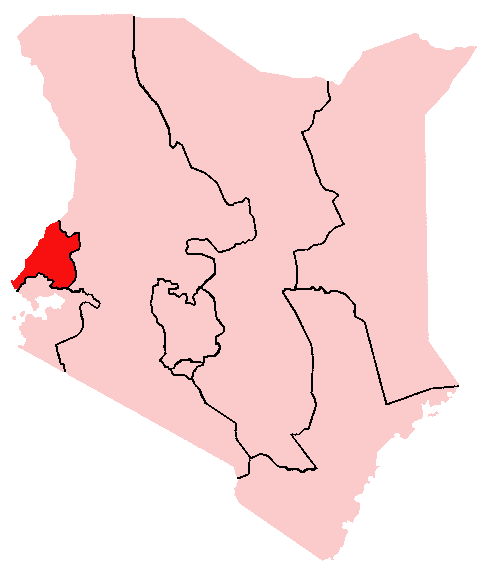|
Idakho Tribe (Luhya)
The Idakho ''(Abitakho, Idakho, Abidakho)'' are a Luhya sub-group that reside primarily in the fertile Kakamega District, Western Kenya. Idakho is administratively known as Ikolomani, Ikolomani being the only Constituency in the region. As is the case with the wider Western Province, Idakho, Kakamega is densely populated with its 2007 population estimated at having surpassed 150,000. It is widely believed that the Bidakho are descendants of Mwitakho. Scarcity of land and the Bidakho's changing lifestyles have made the people diversify with many today engaging in dairy farming and on a smaller scale, tea farming. Maize however is the most widely grown crop, supplying their staple food, bushuma. It is harvested bi-annually. The traditional life however only serves as a supplement to their 'modern' family life. Enjoying good levels of literacy (72%), Bidakho today are actively engaged in business, the civil service and private enterprise in all major East African towns. His ... [...More Info...] [...Related Items...] OR: [Wikipedia] [Google] [Baidu] |
Luhya People
The Luhya (also known as ''Abaluyia'' or Luyia) comprise a number of Bantu ethnic groups native to western Kenya. They are divided into 20 culturally and linguistically related tribes. ''Luhya'' refers to both the 20 Luhya clans and their respective languages collectively called Luhya languages. There are 20 (and by other accounts, 21, when the Suba are included) clans that make up the Luhya. Each has a distinct dialect best on thelocality of the speakers.The different dialects shows maturity of the luhya language. The Luhya language can only be equated to the Baganda,Soga and Lugisu language in Uganda. The Luhya culture is similary to Great lakes region Bantu speakers that stretches all the way from their anceral land in DRC. The word ''Luhya'' or ''Luyia'' in some of the dialects means "the north", and ''Abaluhya (Abaluyia)'' thus means "people from the north". Other translations are "those of the same hearth." The seventeen sub-tribes are the Bukusu (''Aba-Bukusu''), Idakho ... [...More Info...] [...Related Items...] OR: [Wikipedia] [Google] [Baidu] |
Kakamega District
Kakamega County is a county in the former Western Province of Kenya and borders Vihiga County to the South, Siaya County to the West, Bungoma and Trans Nzoia counties to the North and Nandi and Uasin Gishu counties to the East. Its capital and largest town is Kakamega. It has a population of 1,867,579 and an area of 3,033.8 km2. Physical and topical features County has an altitude range from 1,240 metres to 2,000 metres above sea level. Southern part of the county is hilly and made of granites which raises it 1950m above sea level. Nandi Escarpment is a key feature on the eastern border of the county with steep cliffs rising from 1700m to 2000m. The county is also endowed with a number of hills like Misango, Imanga, Eregi, Butieri, Sikhokhochole, Mawe Tatu, Lirhanda, Kiming’ini hills among others. Climatic conditions Rainfall is uniformly distributed throughout the year with march and July receiving highest whereas December and February the least. The county ha ... [...More Info...] [...Related Items...] OR: [Wikipedia] [Google] [Baidu] |
Western Kenya
After the 2013 general election, and the coming into effect of the new constitution, provinces became defunct and the country was now divided into 47 counties. Each county has its own government and therefore there is no central regional capital. Western Province became the Western region, comprising four counties: Kakamega, Bungoma, Vihiga, and Busia. Kakamega is the seat of government for Kakamega County, Bungoma County has its seat in Bungoma town, Busia County has the Assemble in Busia, Vihiga County in Vihiga town, all the County governments and governors are answerable to the people not to the national government. The Western Region ( sw, Magharibi) of Kenya, bordering Uganda, is one of former Kenya's seven administrative provinces outside Nairobi. It is west of the Eastern Rift Valley and is inhabited mainly by the Luhya people. Quakerism is widely practised here. Kenya's second highest mountain, Mount Elgon is located in Bungoma County. The Kakamega Forest rainf ... [...More Info...] [...Related Items...] OR: [Wikipedia] [Google] [Baidu] |
River Yala
{{Infobox river , name = Yala River , image = YalaRiver.JPG , image_size = , image_caption = Yala river within Kakamega rainforest, western Kenya , image_alt = , map = , map_size = , map_caption = , map_alt = , pushpin_map = Kenya , pushpin_map_size = , pushpin_map_caption= Mouth location , pushpin_map_alt = , subdivision_type1 = Country , subdivision_name1 = Kenya , subdivision_type2 = , subdivision_name2 = , subdivision_type3 = , subdivision_name3 = , subdivision_type4 = , subdivision_name4 = , subdivision_type5 = , subdivision_name5 = , length = {{convert, 219, km , width_min = , width_avg = , width_max = , depth_min = , depth_avg = , depth_max = , discharge1_location= , discharge1_min = , discharge1_avg = , discharge1_max = , ... [...More Info...] [...Related Items...] OR: [Wikipedia] [Google] [Baidu] |
Idaxo-Isuxa-Tiriki Language
Idakho, Isukha, and Tiriki (''Luidakho, Luisukha, Lutirichi'') are mutually intelligible Kenyan languages within the Luhya ethnic group. They are a set of languages closely related to some other Luhya ethnic groups like Maragoli, but less so in comparison to others, like Bukusu The Bukusu people ( Bukusu: ''Babukusu'') are one of the seventeen Kenyan tribes of the Luhya Bantu people of East Africa residing mainly in the counties of Bungoma and Trans Nzoia. They are closely related to other Luhya people and the Gisu ...,Tachoni or Samia, Tiriki Tiriki, or known by the autoglossonym Lutirichi, is a language variety spoken in western Kenya and eastern Uganda within the Luyia language family. It is the southeasternmost of the Luyia dialects, spoken primarily in Hamisi Constituency in Vihiga County, Western Province, Kenya. As reported in the 15th ed. of the Ethnologue, a 1980 survey by Bernd Heine and Wilhelm Möhlig estimated there to be 100,000 speakers of Tiriki. The 17t ... [...More Info...] [...Related Items...] OR: [Wikipedia] [Google] [Baidu] |

